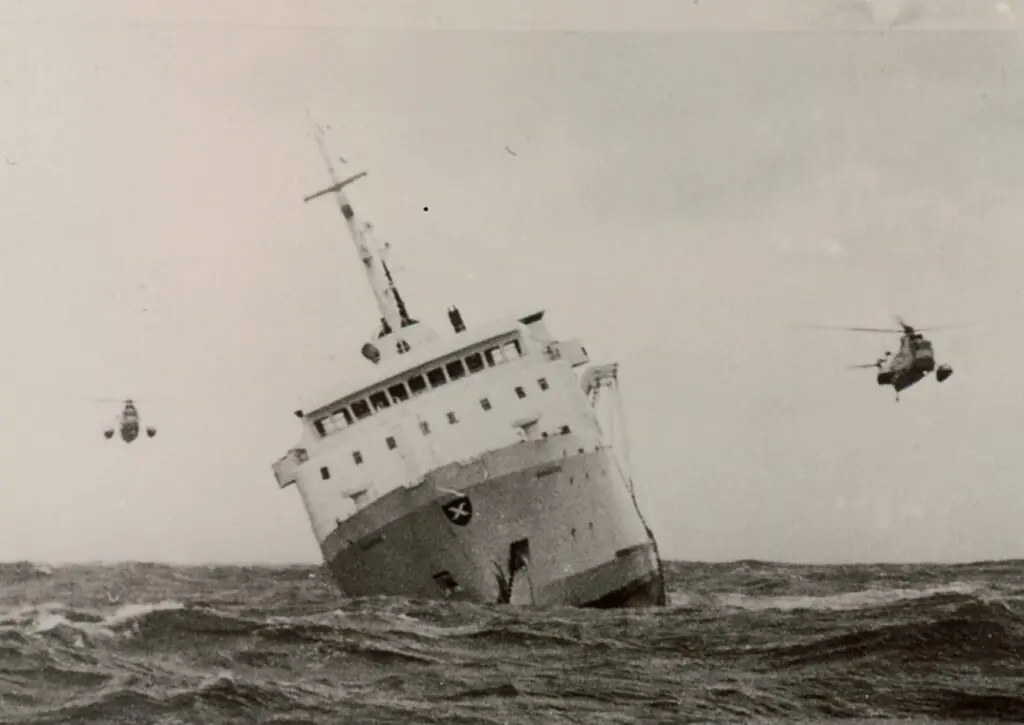The Weekly Reflektion 30/2025
When we started Reflekt in October 2017, our intention was to make a difference in learning from Major Accidents. We started our weekly Reflektions with stories about Major Accidents and we hope these will inspire you to take the time to learn. Sometimes we findexamples where the learning from a Major Accident has beenimplemented, and lives saved as a result. Sometimes we are saddened by the missed opportunities, where learning could have prevented future disasters. Some incidents demonstrate both the value of learning and the tragedy of failure to learn.

Are you learning from Major Accidents?
On 7th September 1966, the car ferry MF Skagerat left Kristiansand, Norway to sail to Hirtshals, Denmark. Adverse weather conditions had initially delayed the sailing, however the captain decided to depart at 05:45. At 11:21 a giant wave slammed into the stern gate of the ferry. Water entered the car deck and eventually flooded the engine room, leading to a loss of propulsion and a list. Immediately after the incident the captain realized the precarious situation and issued an SOS signal, which triggered a massive rescue including ships, planes, fishing vessels and helicopters. It was estimated that 4000 people participated in the rescue operation. There were 97 passengers and 47 crew on board and all were rescued. The only casualty was one person who suffered a cardiac arrest and unfortunately died. The Danish Royal Air Force had recently taken delivery of five Sikorsky S-61A helicopters, and this was first major incident where they were used and 59 people were rescued by these helicopters. The other survivors were picked up by attending vessels from lifeboats, life rafts or directly from the sea. The incident had a major impact on the development of rescue services in Norway. The question on whether Norway could have handled a similar incident was much debated, and in 1970 the Norwegian Parliament decided to procure 10 helicopters for rescue services. These helicopters have proved to be an invaluable resource since they came into service, demonstrating the importance of learning.
The gate that failed on the MF Skagerat was designed with nine locking bolts on each side. On the day of the incident the crew had secured only two bolts, at the top and bottom of each side. The crew routinely failed to close all nine bolts as this was time-consuming in the hectic turn around in port. Failing to follow the procedures during a hectic turnaround was the main reason for the loss of 193 passengers and crew on the car ferry Herald of Free Enterprise on 6th March 1987. The ferry sailed with the bow door open, water flooded the car deck, and the ferry rolled then capsized in shallow water. There were several incidents with the car ferry leaving port with the bow door open including one instance with the door open for the whole crossing. Unfortunately, there was no learning from MF Skagerat.
MS Estonia was a car-ferry deployed on the route between Tallinn and Stockholm in the Baltic Sea. On 28th September 1994 the ferry sank and 852 of the 989 people on board lost their lives. The cause of the disaster was a failure of locks on the bow door due to a poor design. The crew were also criticized for failing to reduce speed when the first indication of a problem with the bow door arose. Learning from MF Skagerat, and the importance of the integrity of the doors on car ferries, might have led to more focus on the bow doors on MS Estonia. Arguably, another failure to learn.
